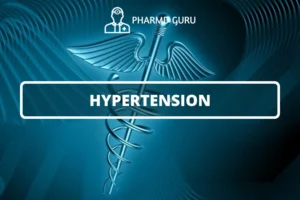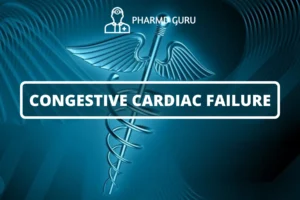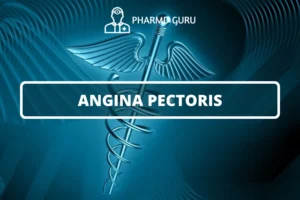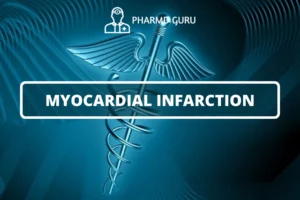ELECTROPHYSIOLOGY OF HEART:
The human heart is a remarkable organ that beats rhythmically, ensuring the circulation of blood throughout the body. The electrical signals responsible for coordinating the heart’s contractions are generated and regulated by a complex system known as cardiac electrophysiology. In this article, we will explore the basics of cardiac electrophysiology, the mechanisms behind arrhythmias, and the importance of understanding and managing these conditions.
SCROLL DOWN TO THE BOTTOM OF THIS PAGE FOR ACTUAL NOTES.
Table of Contents
- Introduction: The Electrophysiology of the Heart
- Cardiac Action Potential
- Conduction System of the Heart
- Arrhythmias: Types and Causes
- Mechanisms of Arrhythmias
- Diagnosis of Arrhythmias
- Treatment of Arrhythmias
- Prevention and Lifestyle Modifications
1. Introduction: The Electrophysiology of the Heart
The electrical activity of the heart is responsible for coordinating its contractions and maintaining a regular heartbeat. Cardiac electrophysiology is the study of these electrical signals and their effects on the heart’s function. It involves the measurement and analysis of electrical potentials and currents within the heart.
2. Cardiac Action Potential
The cardiac action potential is the electrical signal that triggers the contraction of cardiac muscle cells. It consists of distinct phases: depolarization, plateau, repolarization, and resting membrane potential. The action potential is generated by the movement of ions, such as sodium, potassium, calcium, and chloride, across the cell membrane.
3. Conduction System of the Heart
The conduction system of the heart is responsible for propagating electrical signals through the heart, ensuring coordinated contractions. It consists of specialized cells that form a network, including the sinoatrial (SA) node, atrioventricular (AV) node, bundle of His, and Purkinje fibers. The SA node initiates the electrical impulse, which then travels through the AV node and bundle of His, eventually reaching the ventricles and causing their contraction.
4. Arrhythmias: Types and Causes
Arrhythmias are abnormal heart rhythms that can manifest as irregular heartbeats, rapid heart rates, or slow heart rates. They can be classified into different types, including:
- Atrial Fibrillation (AF): Characterized by rapid and irregular atrial contractions.
- Ventricular Tachycardia (VT): Involves rapid ventricular contractions.
- Bradycardia: Abnormally slow heart rate.
- Supraventricular Tachycardia (SVT): Rapid heart rates originating above the ventricles.
- Ventricular Fibrillation (VF): Chaotic and ineffective ventricular contractions.
Arrhythmias can be caused by various factors, including underlying heart conditions, electrolyte imbalances, drug side effects, genetic abnormalities, and lifestyle factors such as excessive alcohol or stimulant use.
5. Mechanisms of Arrhythmias
Arrhythmias can arise from various mechanisms, including:
- Reentry: Occurs when there is a circuit formed within the heart, allowing electrical signals to continuously travel in a loop and cause abnormal rhythms.
- Automaticity: Refers to the abnormal generation of electrical signals by cells outside the normal conduction system, disrupting the heart’s normal rhythm.
- Triggered Activity: Involves abnormal electrical signals that are generated when a heart cell repolarizes prematurely, leading to additional signals and potentially causing arrhythmias.
6. Diagnosis of Arrhythmias
The diagnosis of arrhythmias involves various tests and procedures, including:
- Electrocardiogram (ECG): Records the electrical activity of the heart and helps identify abnormalities in the rhythm and conduction.
- Holter Monitoring: A portable device that records the heart’s electrical activity over 24-48 hours, providing a more extended monitoring period.
- Electrophysiology Study (EPS): Involves the insertion of catheters into the heart to assess its electrical properties and provoke arrhythmias for further evaluation.
7. Treatment of Arrhythmias
The treatment of arrhythmias aims to restore and maintain a normal heart rhythm. It can include:
- Medications: Antiarrhythmic drugs can help regulate the heart’s electrical activity and control abnormal rhythms.
- Cardioversion: Involves delivering an electrical shock to the heart to restore a normal rhythm in certain arrhythmias.
- Ablation: A procedure in which abnormal cardiac tissue responsible for arrhythmias is destroyed using heat, cold, or radiofrequency energy.
- Implantable Devices: Devices such as pacemakers and implantable cardioverter-defibrillators (ICDs) can help regulate the heart’s rhythm and provide therapy if a dangerous arrhythmia occurs.
8. Prevention and Lifestyle Modifications
Certain lifestyle modifications can help prevent or manage arrhythmias, including:
- Avoiding triggers: Identifying and avoiding factors that can trigger arrhythmias, such as stress, caffeine, alcohol, or certain medications.
- Maintaining a healthy lifestyle: Adopting a heart-healthy diet, regular exercise, managing stress, and maintaining a healthy weight can contribute to overall heart health.
- Managing underlying conditions: Treating and managing conditions that contribute to arrhythmias, such as high blood pressure, diabetes, or thyroid disorders.
ACTUAL NOTES:
UPDATED VERSION




